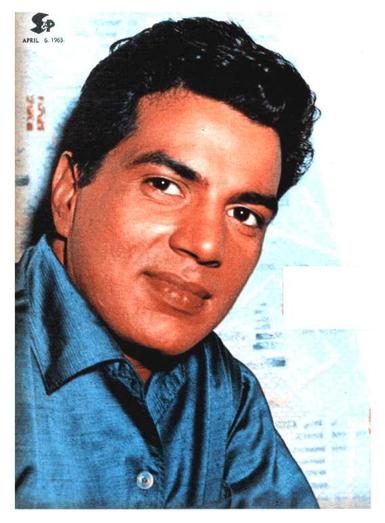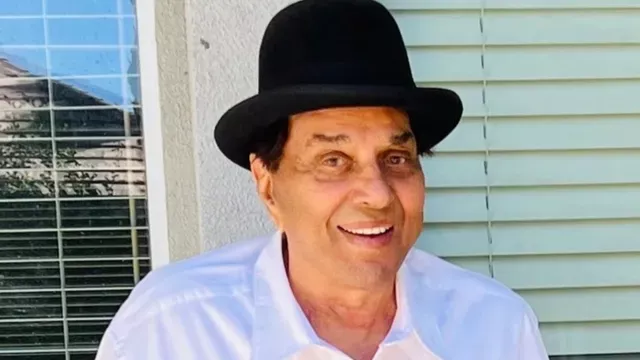Dharmendra death 2025: Bollywood legend He-Man of Indian cinema dies at 89
By: Javid Amin | 24 November 2025
The End of an Era
When we talk about the golden age of Bollywood — the 1960s through the 1980s — one name always resonates: Dharmendra. His recent passing on 24 November 2025 at the age of 89 marks not only the loss of a beloved actor but the closing of a chapter in Indian cinema.
Affectionately called the “He-Man” of Bollywood, Dharmendra embodied a mix of action-hero charisma, romantic appeal and comic timing. Over more than six decades he starred in over 300 films.
This article, from the vantage of a senior editor, copywriter and Bollywood expert, will take you through his life story, key milestones, personal journey, his final days, the industry’s response, his legacy and why his loss matters so deeply.
Early Life: From Punjab Fields to Film Sets
Born Dharmendra Kewal Krishan Deol on 8 December 1935 in Nasrali, Punjab (then British India), he came from a farming background and had humble beginnings.
The young Dharmendra moved to Mumbai (then Bombay) in the late 1950s, after winning a talent competition organised by a film magazine.
Imagine a young man from Punjab arriving in Bombay with dreams in his eyes, uncertain of his future — this was the background of the man who would become one of Indian cinema’s biggest stars.
Breaking In: 1960s
-
His debut film: Dil Bhi Tera Hum Bhi Tere (1960) marked his entry into the industry.
-
He steadily built a reputation for handsome looks, strong screen presence and versatility — a combination that set him apart.
-
His early films were a mix of romance and drama, allowing him to establish himself firmly before the massive stardom of the 1970s.
The Rise to Stardom: Action, Romance & Comedy
Iconic Phase: 1970s
The 1970s were a defining decade for Dharmendra. His screen persona grew in power — he became equally comfortable in action-packed roles, romantic leads and comedies.
Action Hero
-
Films like Mera Gaon Mera Desh (1971) and Dharam Veer catered to the mass audience and reinforced his hero-image.
-
He acquired the nickname “He-Man” due to his muscular physique, confident presence and action roles that set a template for many heroes.
Romantic & Comedy Performer
-
With films like Chupke Chupke (1975), he showed finesse in comedy, earning critical as well as popular acclaim.
-
Motivated by strong scripts, he balanced mass-appeal with versatility — a rare combination at the time.
Career Milestone: Sholay (1975)
-
Arguably his most iconic film, Sholay changed the landscape of Indian cinema.
-
In it, Dharmendra played “Veeru” alongside Amitabh Bachchan’s “Jai” — a pairing that became legendary.
-
His performance left an indelible mark on the public psyche.
1980s-90s: Growth & Reinvention
-
The 1980s saw him sustain his stardom, adapt to changing audience tastes and remain relevant amid new entrants.
-
By the 1990s and 2000s, he moved toward character roles and patriarchal figures, showing his ability to evolve with time.
Personal Life: Beyond the Screen
Family & Relationships
-
Dharmendra married his first wife, Prakash Kaur, early on; together they had children including actors Sunny Deol and Bobby Deol.
-
He later married actress Hema Malini in 1980, though his first marriage remained legally intact — a complex and much-discussed aspect of his personal life.
-
His daughters, including Esha Deol and Ahana, and his wider Deol family continue his cinematic legacy.
Politics & Beyond
-
Beyond film, Dharmendra served as a Member of Parliament (Lok Sabha) for the Bharatiya Janata Party from 2004-2009.
-
He was awarded the Padma Bhushan in 2012 for his contribution to Indian cinema.
The Man Off-Screen
Colleagues, friends and family often described him as warm, grounded and humble — despite enormous fame. His on-screen machismo was balanced by an off-screen gentleness, making him beloved across generations.
Final Days & Passing
In the weeks leading up to his death, Dharmendra’s health had been a subject of concern. According to reports:
-
He had been hospitalised multiple times for age-related ailments and respiratory difficulties.
-
Earlier in November rumours of his death circulated on social media, which his wife Hema Malini and daughter Esha Deol strongly denied, asking for privacy.
-
On 24 November 2025 he passed away in Mumbai at the age of 89 — reportedly at his residence after a brief illness.
The Farewell
His funeral was held in Mumbai, with many film industry luminaries paying their respects. Reuters+1 Prime Minister Narendra Modi described the loss as “the end of an era in Indian cinema.”
Legacy: Why Dharmendra Matters
The Screen Legacy
-
Over 300 films across six decades.
-
A rare actor who could shift between mass-hero, rom-com, action-hero and character roles.
-
A template for future stars who wanted to combine box-office strength with versatility.
Cultural Impact
-
He defined a generation’s idea of heroism: strong yet tender, fearless yet emotional.
-
His role in Sholay alone has been referenced, parodied and celebrated countless times across Indian pop-culture.
-
The “He-Man” epithet illustrates how he stood apart — not just as an actor but as an icon.
The Family Legacy
-
His sons Sunny and Bobby Deol, daughter Esha Deol and nephew Abhay Deol continue to carry the Deol brand in cinema.
-
His longevity and ability to adapt have inspired many in the industry.
Off-Screen Influence
-
His political stint, his awards and his philanthropic and social presence show a public life beyond films.
-
Many remember him for his humility, for staying connected to his roots in Punjab and never losing his sense of self.
Why His Passing Is More Than a Celebrity Death
-
It signifies a transition — from an era of classical Bollywood star-heroes to the current multiplex, franchise-driven era.
-
It highlights the end of a living connection to 1960s-70s cinema which remains foundational for today’s industry.
-
It brings a moment of collective reflection: on legacy, on changing cinema, on how film-stars become part of national identity.
A Look At His Greatest Films (Milestones)
Here are some key films that represent his journey:
-
Dil Bhi Tera Hum Bhi Tere (1960) – early debut
-
Phool Aur Patthar (1966) – breakthrough as leading man
-
Mera Gaon Mera Desh (1971) – mass hero image
-
Chupke Chupke (1975) – comedy finesse
-
Sholay (1975) – cult status
-
Dharam Veer (1977) – heroic mass entertainer
-
Anupama, Satyakam – romantic / serious roles
-
Later roles (1990s-2010s) – character & patriarchal roles
-
His last film Ikkis (2025) – seen as his final bow.
Tributes & Industry Reaction
-
“He was an iconic film personality, a phenomenal actor who brought charm and depth to every role he played,” said PM Narendra Modi.
-
Filmmaker Karan Johar called him “a massive mega star, the embodiment of a hero in mainstream cinema.”
-
Colleagues, critics and fans alike have poured in admiration, shared memories, and emphasised his wide affection across generations.
Reflecting On His Persona: What Made Him Enduring?
Charisma With Authenticity
Dharmendra’s on-screen presence was commanding but never arrogant. He combined style with substance.
Physicality & Versatility
His action roles earned him “He-Man” status, but he never let that pigeon-hole him — he did romance, comedy, drama, even nuanced art-films.
Mass Appeal + Class
He drew the masses in with blockbuster entertainers, yet won respect for his craft and ability to adapt.
Longevity & Evolution
Few actors remain relevant for six decades. Dharmendra managed this by evolving: from action hero to romantic lead to patriarch to legend.
Connection With Audiences
He remained accessible, rooted, connected to his origins. That endeared him beyond screen-heroes and turned him into a cultural icon.
Lessons for Today’s Actors and Filmmakers
-
Adaptability matters. The ability to evolve is essential in an industry that changes fast.
-
Balance craft & commerce. Dharmendra excelled in films that were commercially successful but also gave him scope to perform.
-
Authenticity counts. Being recognised as a human, not just a star, builds audience loyalty.
-
Embrace legacy but stay current. He took on character roles while acknowledging his past, setting a model for stars today.
-
Use your platform beyond the screen. Politics, philanthropy or influencing culture — Dharmendra used all.
The Panorama of Indian Cinema He Represented
If we view Indian cinema as a timeline, Dharmendra’s career maps many of its key changes:
-
The 1960s: emerging star & romance films
-
The 1970s: mass action, blockbuster cinema, ensemble entertainers
-
The 1980s-90s: star system consolidation, transition into mature roles
-
2000s-2020s: changing audiences, multiplex culture, legacy & nostalgia
His presence across these phases makes him not just a star but a living archive of Bollywood’s evolution.
Bottom-Line: A Farewell With Gratitude
Dharmendra’s passing leaves a void, but also a legacy rich in inspiration. When the curtains closed over his final act, the applause didn’t die — it changed form. It continues in the hearts of audiences, the reels of his films and the echoes of his legacy.
He taught us that heroism can be gentle, that action can have heart, that comedy can have depth, and that longevity is earned, not given. The “He-Man” may have left the stage, but his presence remains — timeless.
Om Shanti, Dharmendra ji. Thank you for the memories.




